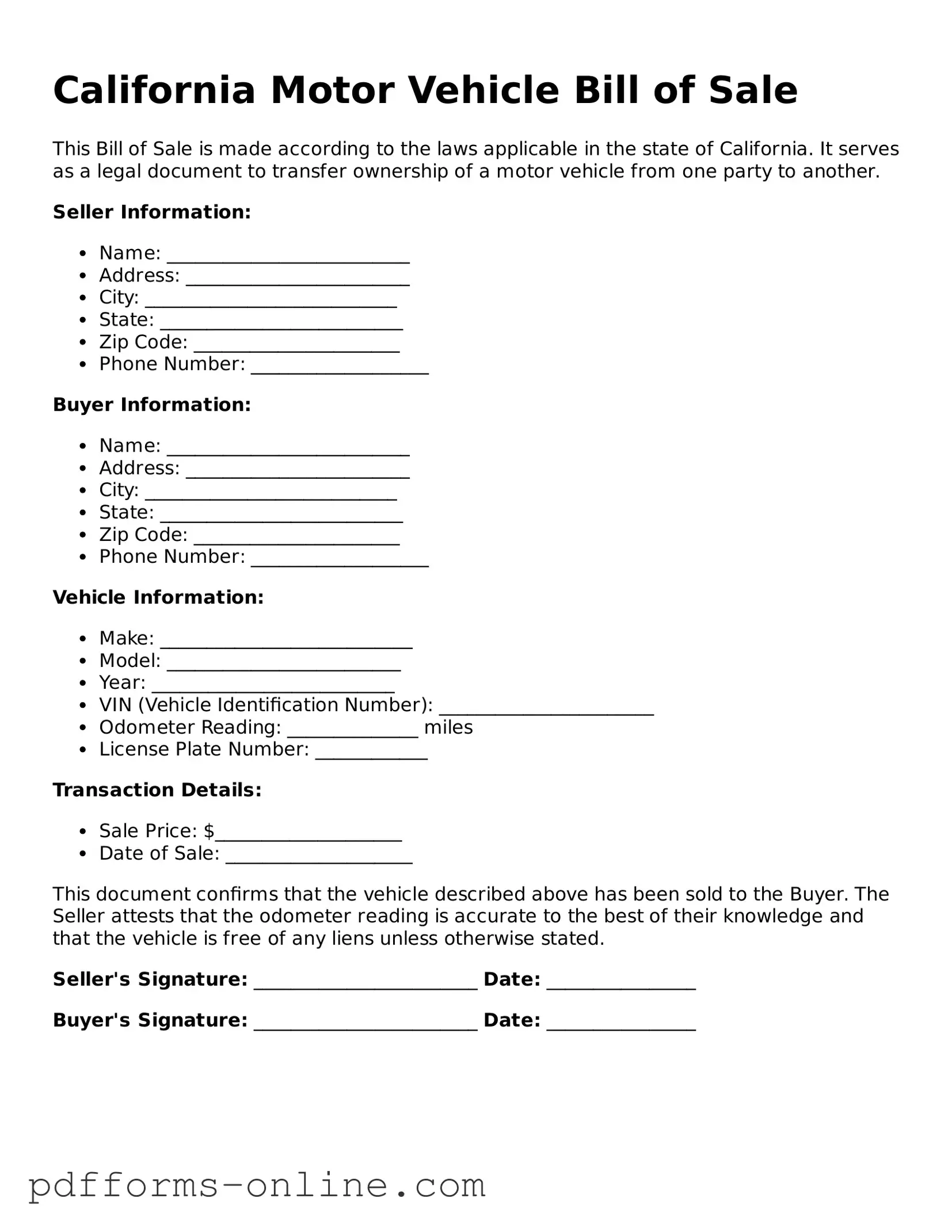The California Vehicle Registration Application is a document used to register a vehicle with the Department of Motor Vehicles (DMV). Similar to the Bill of Sale, it requires details about the vehicle, including the make, model, and Vehicle Identification Number (VIN). Both documents serve as essential proof of ownership and are often required during the vehicle transfer process. The registration application also includes information about the buyer and seller, ensuring that the DMV has accurate records for legal ownership.
The Vehicle Title is another important document that shares similarities with the Bill of Sale. A title proves ownership of the vehicle and is transferred from the seller to the buyer during a sale. Like the Bill of Sale, the title includes key details such as the VIN, make, model, and the names of both parties. Both documents are critical for establishing legal ownership and are often needed for registration purposes.
The odometer disclosure statement is required when transferring a vehicle. This document verifies the mileage on the vehicle at the time of sale, ensuring transparency between the buyer and seller. Similar to the Bill of Sale, it protects both parties by providing a record of the vehicle's condition. Accurate mileage disclosure helps prevent fraud and supports fair pricing in the transaction.
The Release of Liability form is used to inform the DMV that the seller is no longer responsible for the vehicle after the sale. This document is similar to the Bill of Sale in that it confirms the transfer of ownership. By submitting this form, the seller protects themselves from future liabilities associated with the vehicle, such as traffic violations or accidents that occur after the sale.
The Vehicle History Report offers insights into a vehicle's past, including accidents, title changes, and service records. While it is not a transfer document like the Bill of Sale, it is often used alongside it to provide buyers with a comprehensive understanding of the vehicle’s condition. Both documents are important for ensuring a fair transaction and making informed decisions.
The Smog Certification is necessary for certain vehicles in California. This document certifies that the vehicle meets state emissions standards. Like the Bill of Sale, it is often required during the sale process to ensure that the vehicle is roadworthy and compliant with environmental regulations. Buyers can feel more confident knowing that the vehicle has passed these tests.
The Insurance Card is another document that plays a crucial role during a vehicle sale. While it does not transfer ownership, it provides proof that the vehicle is insured. Similar to the Bill of Sale, it protects the buyer by ensuring that they have coverage as soon as they take possession of the vehicle. Having valid insurance is essential for legal driving and peace of mind.
The Affidavit of Non-Ownership is used when the seller cannot provide a title for the vehicle. This document allows the seller to declare that they are not the legal owner while still facilitating the sale. Like the Bill of Sale, it serves as a record of the transaction and helps protect both parties. It provides an alternative route for transferring ownership when the title is unavailable.
Finally, the Loan Payoff Statement is relevant when a vehicle is being sold while still under financing. This document outlines the remaining balance on the loan and is crucial for the seller to clear the title. Similar to the Bill of Sale, it helps ensure that the sale is conducted transparently and that all financial obligations are met before the transfer of ownership takes place.
